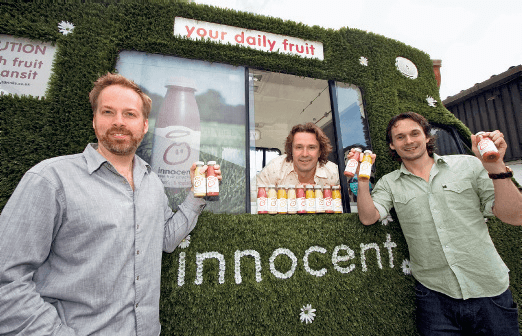Get physical
One of the least glimpsed, but most profound, differences between the act of consuming a brand and the task of marketing it, is the degree of intimacy involved.
For all but the most ethereal of categories, consumption intimacy means exactly that. The product might well end up inside the person (snack, beer, analgesic), or the person might well end up inside the product (hotel, aircraft, bank).
Either way, it’s a physical experience, replete with sounds, smells, sensations and, above all, touch – enough to give that marketing buzzword ‘touchpoint’ some real meaning. Consumption, for the most part, is a hands-on affair.
Marketing, increasingly, is a hands-off discipline, conducted by intermediate means. You can walk through the marketing department of a big global brand, weaving past people intently focused on screens, and realise that, were it not for the company name on your visitor’s badge, you’d have no idea of even the category that was the point of it all.
The screen has become our window on the market and, like any window, it sets up a barrier as well as permitting a view. Desensitised from the rawness of consumer experiences, we create a language of abstraction, and depict it with graphic symbolism. Something we call ‘architecture’ is expressed as a model; ‘awareness’ is a graph; ‘bonding’ is a pyramid; ‘attitude’ is a word-cloud distillation of internet chatter.
It’s all data, in through the eye, scanned by the brain, reconfigured and released back out again in PowerPoint presentations to infuse the group consciousness. It’s all useful, and, for the most part, highly efficient: commercial firepower condensed into pixels.
Yet it is all dangerous if it is all that we do. Marketers need to get hands-on, partly to stay sane, and partly to experience the brand as consumers do, with all its rewards, frustrations and sheer physicality.
Here, a leading chief executive has shown marketers the way. In a recent Marketing interview, easyJet’s Carolyn McCall revealed that she goes up and down with the bin bag every time she takes one of her airline’s flights, collecting passengers’ rubbish.
It doesn’t get much more physical than that – and it is a lead that marketers and their agencies could do worse than follow.
If you need to undertake a brand architecture review, do it by shifting around the physical packs, not with a diagram. It will reveal surprises.
If you head up marketing for a bank, go and queue in a different branch at lunchtime for the next 10 working days. It will keep you honest.
If you’re a planner for a pub group, volunteer for back-to-back shifts behind the bar, and gain insights unavailable in a research debrief.
If your category is beauty, join in the actual conversations at the counter, lippy in hand, to add to your virtual conversations in social media.
Most marketers, of course, have done such things, perhaps as part of their rites-of-passage induction to the brand. Gradually, though, the day-job pressure takes over and they, literally and figuratively, lose touch.
Don’t wait until the symptoms are there – when you can’t face another framework, or internalise another spider-graph. Get out there now, and put your hands on the brand again the way your consumers do. Get intimate; get physical; get real.
In March of this year, Tesco boss Philip Clarke announced that he was going ‘back to the floor’ – where he began his career as a shelf stacker aged 14 – in a bid to get to grips with why customers are currently flocking away from the chain. His willingness to muck in addresses analysts’ concerns that Tesco is losing touch with its customers.

Innocent hands-on founders
Innocent Drinks was started by three Cambridge graduates who asked drinkers at a festival to ‘vote with their empty bottles’ whether they should give up their careers and go into the smoothie business. Thirteen years and £200 million later, Richard, Adam and Jon are still going out to sell the drinks personally at festivals – except now it’s more likely to be one of their own Village Fetes – and are involved in tasting new products through all stages of development.
Michael O’Leary, Ryanair’s infamous CEO, has often been known to help load baggage onto planes, especially when the budget airline launches new routes. His first-hand experience is perhaps what led him to propose that Ryanair passengers may in future carry their own bags to the aircraft hold, cutting fares by reducing the number of luggage handlers from five per plane to just one.
